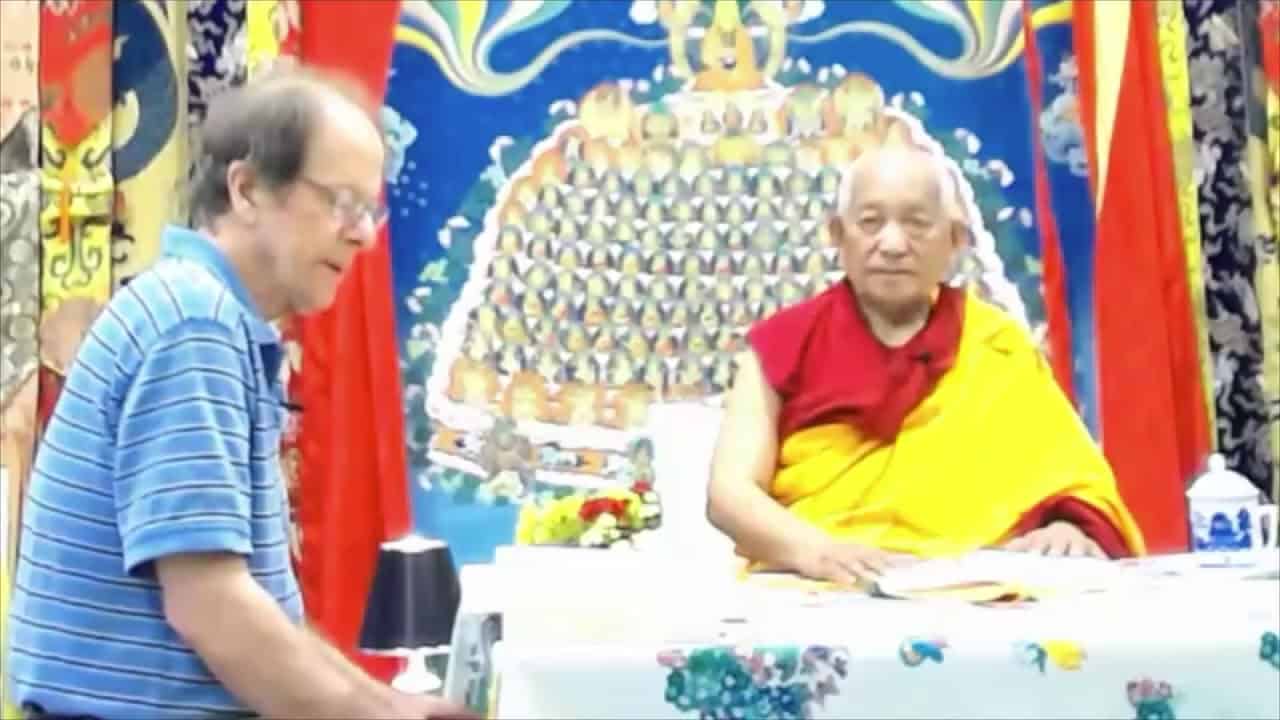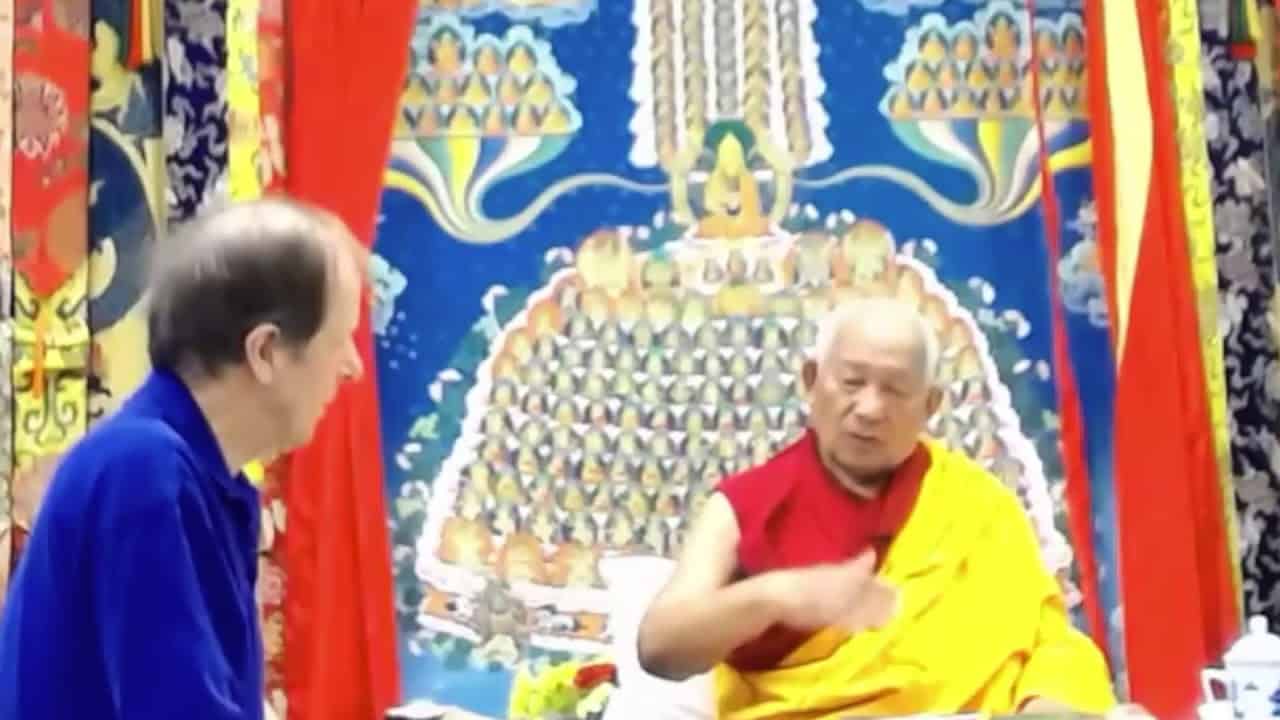Chapter 13: Verses 311-319
Part of a series of teachings on Aryadeva's 400 Stanzas on the Middle Way given on an annual basis at Sravasti Abbey by Geshe Yeshe Thabkhe beginning in 2013.
- Does direct perception come from the side of the perceiving consciousness or from the side of the object that it perceives?
- Refuting the contention that if eyes exist then visible forms exist
- Refuting an inherently existent visual consciousness as the one that is looking at an object
- Refuting an inherently existent eye as the perceiver
- Consequence that the eye is an instrument of looking in relation to the eye
- Refuting the combination of the three—eye, consciousness, and object—as the instrument of looking at visible form
- Refuting inherently existent auditory objects
Geshe Yeshe Thabkhe
Geshe Yeshe Thabkhe was born in 1930 in Lhokha, Central Tibet and became a monk at the age of 13. After completing his studies at Drepung Loseling Monastery in 1969, he was awarded Geshe Lharampa, the highest degree in the Geluk School of Tibetan Buddhism. He is an emeritus professor at the Central Institute of Higher Tibetan Studies and an eminent scholar of both Madhyamaka and Indian Buddhist studies. His works include Hindi translations of The Essence of Good Explanation of Definitive and Interpretable Meanings by Lama Tsongkhapa and Kamalasila's commentary on the Rice Seedling Sutra. His own commentary, The Rice Seedling Sutra: Buddha’s Teachings on Dependent Arising, was translated into English by Joshua and Diana Cutler and published by Wisdom Publications. Geshela has facilitated many research works, such as a complete translation of Tsongkhapa’s The Great Treatise on the Stages of the Path to Enlightenment, a major project undertaken by the Tibetan Buddhist Learning Center in New Jersey where he teaches regularly.


